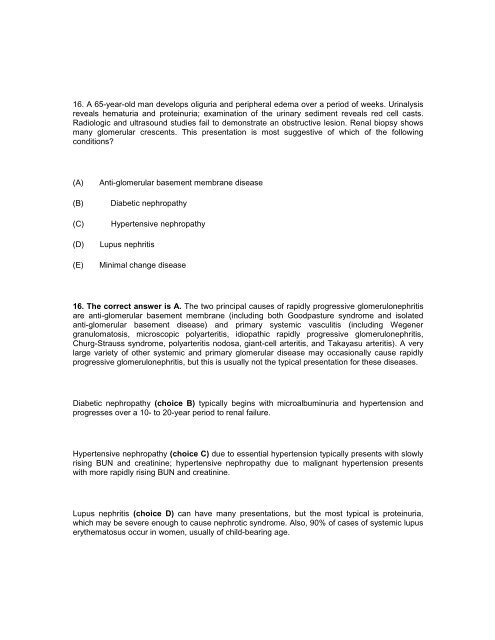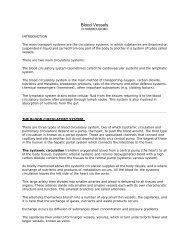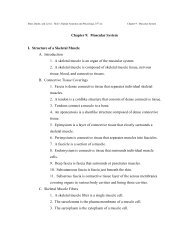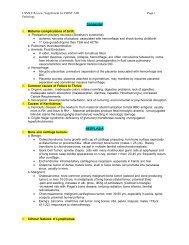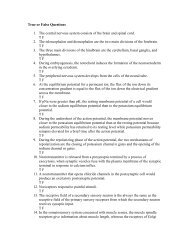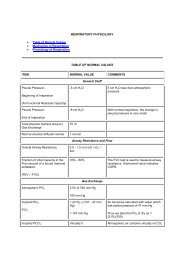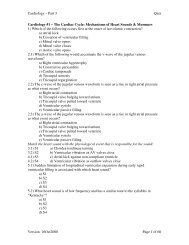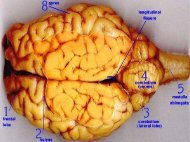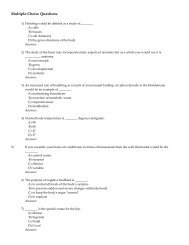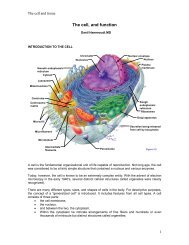L:\usmle review 7 - Sinoe medical homepage.
L:\usmle review 7 - Sinoe medical homepage.
L:\usmle review 7 - Sinoe medical homepage.
Create successful ePaper yourself
Turn your PDF publications into a flip-book with our unique Google optimized e-Paper software.
16. A 65-year-old man develops oliguria and peripheral edema over a period of weeks. Urinalysis<br />
reveals hematuria and proteinuria; examination of the urinary sediment reveals red cell casts.<br />
Radiologic and ultrasound studies fail to demonstrate an obstructive lesion. Renal biopsy shows<br />
many glomerular crescents. This presentation is most suggestive of which of the following<br />
conditions<br />
(A)<br />
(B)<br />
(C)<br />
(D)<br />
(E)<br />
Anti-glomerular basement membrane disease<br />
Diabetic nephropathy<br />
Hypertensive nephropathy<br />
Lupus nephritis<br />
Minimal change disease<br />
16. The correct answer is A. The two principal causes of rapidly progressive glomerulonephritis<br />
are anti-glomerular basement membrane (including both Goodpasture syndrome and isolated<br />
anti-glomerular basement disease) and primary systemic vasculitis (including Wegener<br />
granulomatosis, microscopic polyarteritis, idiopathic rapidly progressive glomerulonephritis,<br />
Churg-Strauss syndrome, polyarteritis nodosa, giant-cell arteritis, and Takayasu arteritis). A very<br />
large variety of other systemic and primary glomerular disease may occasionally cause rapidly<br />
progressive glomerulonephritis, but this is usually not the typical presentation for these diseases.<br />
Diabetic nephropathy (choice B) typically begins with microalbuminuria and hypertension and<br />
progresses over a 10- to 20-year period to renal failure.<br />
Hypertensive nephropathy (choice C) due to essential hypertension typically presents with slowly<br />
rising BUN and creatinine; hypertensive nephropathy due to malignant hypertension presents<br />
with more rapidly rising BUN and creatinine.<br />
Lupus nephritis (choice D) can have many presentations, but the most typical is proteinuria,<br />
which may be severe enough to cause nephrotic syndrome. Also, 90% of cases of systemic lupus<br />
erythematosus occur in women, usually of child-bearing age.


